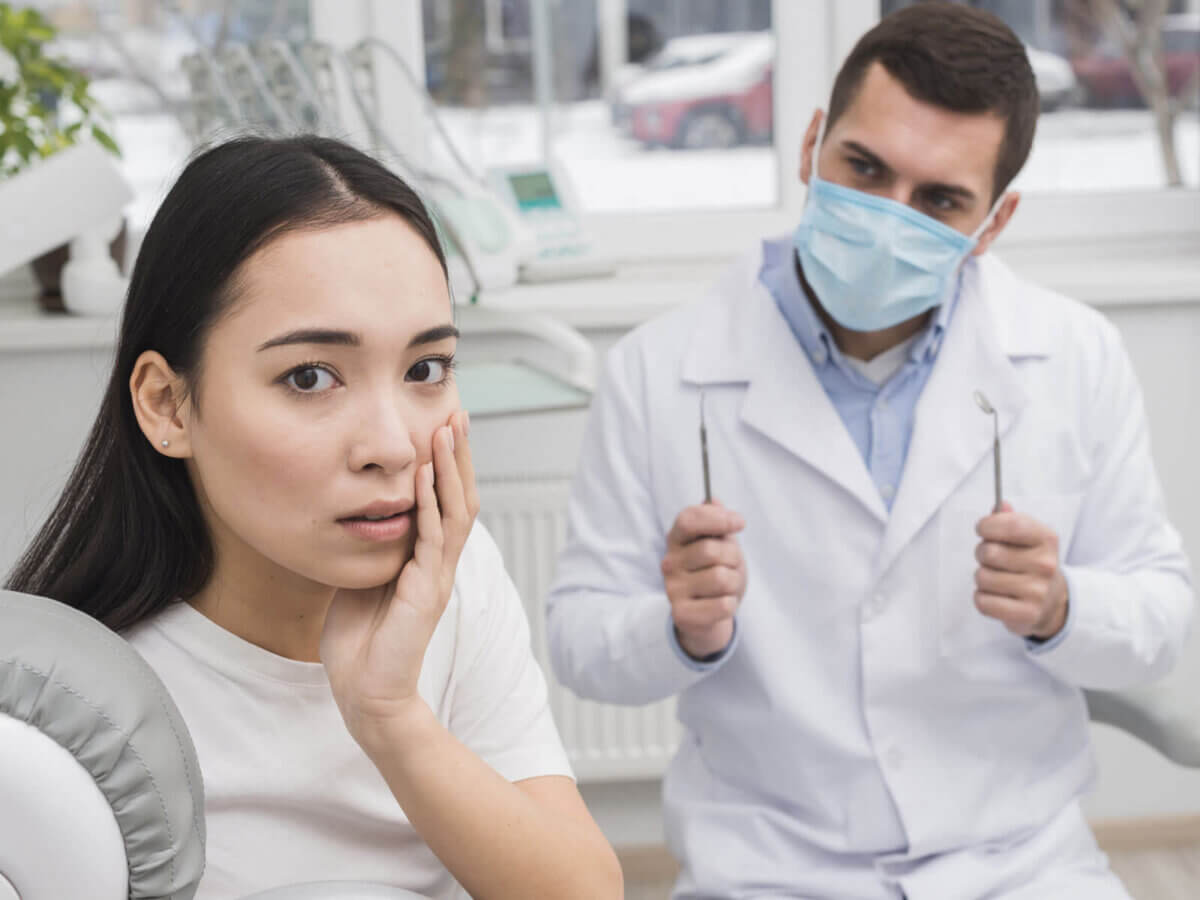Blog
Dental hygiene tips for healthy teeth & gums

Common Dental Emergencies And First Aid Measures
Dental emergencies can occur unexpectedly, causing discomfort and necessitating immediate attention. Knowing how to address frequent dental crises and give first aid measures will help you manage the issue until you can get professional dental care. In this detailed guide, we’ll look at frequent dental crises, suitable first-aid procedures, and the significance of seeking expert help as soon as possible.
1. Toothache:
Rinse the mouth gently with warm water to clean the afflicted region.
Flossing: Use caution when flossing to eliminate any debris causing the pain. Pain relief can be achieved by using over-the-counter pain medications and applying a cold compress.
Seek Professional Assistance:
Dentist Visit: Make an appointment with a dentist to determine and treat the underlying cause of the toothache.
2. Broken Tooth:
Carefully handle the tooth: Avoid contacting the roots by holding the tooth by the crown (top).
Rinse gently: Rinse the teeth with milk or saline solution without scrubbing.
Repositioning the Tooth: Try reinserting the tooth into the socket and holding it there.
Seek Professional Assistance: Contact a dentist immediately for Emergency Dental Care. If you cannot reinsert the tooth, keep it in milk or a tooth preservation kit on your way to the dentist.
3. Broken or chipped tooth:
Keep Broken Pieces: Gather any fractured tooth bits and rinse them under running water. Warm water should be used to rinse the mouth gently. In addition, cold compresses can be used to relieve swelling and discomfort.
Seek Professional Assistance:
Dentist Consultation: Consult a dentist to assess the degree of the damage and propose the best course of action.
Bring Tooth Fragments: Bring any collected tooth fragments to the dentist, as they may be helpful in the restoration process.
4. Missing Filling or Crown:
Temporary Seal: To temporarily seal the exposed region, use dental cement, sugar-free gum, or over-the-counter dental adhesive.
Sticky Foods: Avoid eating sticky or hard foods on the affected side.
Seek Professional Assistance:
Schedule a Dentist Appointment: Make an appointment with a dentist to replace the filling or crown. Bring the dislodged filling or crown to the dentist if possible.
5. Object Caught Between Teeth:
Gentle Flossing: Gently try to remove the trapped object using dental floss.
Avoid Sharp things: Avoid using sharp things or employing excessive force to avoid harm.
Seek Professional Services: Dentist Evaluation: If you cannot remove the object safely, seek the services of a dentist. Immediate intervention helps to avoid problems and suffering.
6. Abscess or Gum Infection:
Warm Saltwater Rinse: Gently rinse the mouth with warm salt water to relieve discomfort and swelling.
Over-the-counter pain medicines: For temporary relief, use pain medicines as indicated.
Seek Professional Help: Immediate Dental Attention: Abscesses require professional treatment, so contact a dentist immediately.
Avoid Self-Draining: Avoid attempting to drain the abscess at home, as this might exacerbate the infection.
7. Jaw fracture:
First Aid Procedures: Stabilise the jaw using a towel or bandage to provide support and stability. Apply a cold compress to the affected area to minimize swelling.
8. Seek Professional Assistance:
Emergency Medical Services: Seek emergency medical attention immediately or go to the hospital.
Avoid Movement: Maintain a raised head and avoid unnecessary movement.
Conclusion
Understanding how to offer first aid measures for typical dental emergencies enables people to respond effectively in unforeseen situations. While these first-aid treatments may provide temporary relief, seeking professional dental care as soon as possible is critical for a comprehensive diagnosis and suitable treatment. Regular dental check-ups and good oral hygiene can also help to prevent emergencies and promote overall oral health. Remember that prompt action and skilled care are critical to protecting oral health and ensuring a quick recovery in a dental emergency.
